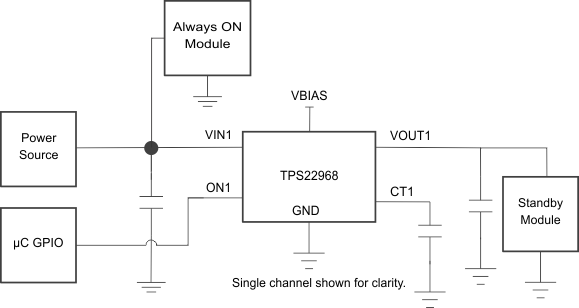SLVSCG3F January 2014 – July 2017 TPS22968
PRODUCTION DATA.
- 1 Features
- 2 Applications
- 3 Description
- 4 Revision History
- 5 Device Comparison
- 6 Pin Configuration and Functions
- 7 Specifications
- 8 Parameter Measurement Information
- 9 Detailed Description
- 10Application and Implementation
- 11Power Supply Recommendations
- 12Layout
- 13Device and Documentation Support
- 14Mechanical, Packaging, and Orderable Information
Package Options
Mechanical Data (Package|Pins)
- DPU|14
Thermal pad, mechanical data (Package|Pins)
- DPU|14
Orderable Information
10.1.2 Standby Power Reduction
Any end equipment that is powered from the battery has a need to reduce current consumption to keep the battery charged for a longer time. TPS22968 helps to accomplish this by turning off the supply to the modules that are in standby state, and therefore, significantly reduces the leakage current overhead of the standby modules. See Figure 32.
 Figure 32. Standby Power Reduction
Figure 32. Standby Power Reduction